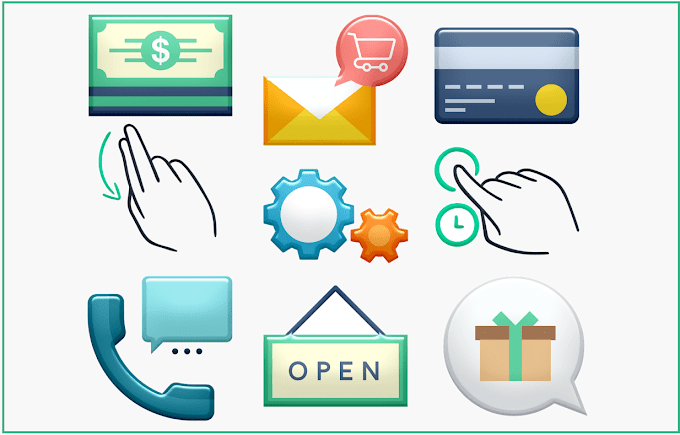
While the 80s or 90s kid has not had the chance to grow up amidst a digital metamorphosis, people born after the 2000s can scarcely envision a world without technology! Cut to 2022: we now live in a world of digitalization and have witnessed so many technological advancements that it has slowly seeped into our very DNA. So much so that these innovations have made their way into our learning environments too.
While conventional teaching methods are becoming increasingly antiquated, advancements in technology are paving the road for young minds to move forward. Although incorporating technology into education is not a new concept, our society has grown increasingly reliant on it, which is why it has gradually made its way into our classrooms. AR development is a result of this transformation. The addition of visual components, acoustics, and other stimuli to real-life environments is known as augmented reality.
In a nutshell, it's a confluence of physical and virtual elements. AR technology is beneficial in a variety of disciplines, education and training being the main domains. The usage of Augmented Reality in education has risen in recent years. They are popular because they are interactive and engaging. This article will provide you with an overview of AR's impact and benefits and the future of the technology.
Getting to Know Augmented Reality
What began as a simple "cool" feature has evolved into a tool to engage students in ways they have never experienced before. AR is a futuristic learning concept in which graphics, images, and sounds are superimposed upon real-world surroundings. It is employed in a variety of applications, including engineering and medicine but is specifically popular in the domains of training and education.
Augmented models are created using digital instructional information. The augmented content is then accessed by viewing or scanning trigger graphics with a mobile device, which elicits an action. This activity could be an image, movie, QR code, game, 3D animation, or anything else the user chooses. As a result, when teachers and students scan AR-based models with their mobile devices, they will get an augmented interpretation. In contrast to traditional classes, where students must bring study materials for notes, an AR education app offers a portable solution that covers the entire curriculum.
AR technology is quickly gaining traction in classrooms throughout the world. They are used in the classroom for a variety of purposes. It makes it easier for students to learn, process, and retain knowledge. AR application in education makes learning more engaging and enjoyable. AR learning is also not limited to a particular age group or degree of education and can be used at any stage of education, from pre-school to college and even at the workplace.
AR application in education increases involvement, collaboration, and engagement for both instructors and learners. Furthermore, it offers a more personalized approach to web-based and in-person learning. The best thing about AR-based learning is that it allows teachers to bring the outside world inside and provide context much more effectively. By combining video and augmented reality information in modern schooling, educational institutions can finally bid farewell to traditional teaching. Animations and videos are considerably easier to comprehend than text. And there is no turning back when the same audio-visual content is paired with augmented models.
What Impact Does AR Learning Have in the Classroom?
Educators using augmented reality apps can provide students with mind-blowing formative activities and infinite learning opportunities. Visual learners will benefit greatly from this type of active learning. The brilliance of augmented reality learning is that it can be as simple or as intricate as you want it to be. The following are some of the most key aspects of how AR will enhance an educational setting.
Simplified Learning That Engages Learners
AR in schools enable educators to break down complex concepts into simplified terms. Features used in an AR classroom piques students' interests while also assisting them in learning teamwork skills through a variety of activities. Because teachers can provide knowledge in a variety of ways, learning becomes more personalized.
Improved Interactivity
For a variety of reasons, no two individuals are alike in their learning styles. Through communicative teaching, AR can close the gap and get all learners on the same page. The use of augmented reality technology adds a lot to the mix. The way learners view things change as they get to see 2D visuals with an immersive experience. It allows the learner's creativity and imagination to flourish.
Encouraging Creativity Through the Power of Visualization
Creative thinking and visualization are the two pillars of effective teaching that the augmented reality service providers are helping to facilitate. When compared to conventional classroom interactions, this technology allows learners to clearly envision concepts.
Summing Up
What once appeared to be fantasy has become a part of our everyday lives. AR is one example of a technology that may transform classroom learning forever as it opens a whole new universe of learning opportunities. And with the emergence of augmented reality mobile app development, the sky's the limit! That enables them to apply what they have learned more practically while making it easier for teachers to instruct students.




![Performance Marketing - What Is it & How It Works [+ 6 Tools You Can Use]](https://blogger.googleusercontent.com/img/b/R29vZ2xl/AVvXsEj0akcIPU36HHfqWoYrb2LCMNG8OvxPb9drUYKWJZvSXmfbJG0OrjN5jfzTFDmT-9MKcuZt-G-66PiLlIVjgX1DwCNzHeIMW0pjW7W3IB2rZYzx4ISbL2T6JC4M38eubqHxQ3e71l2_n7oxh2f2QdV3d1prJ6z9HQNsSyfjtO18diLxEZg-5wD-I6RINFY/w680/performance_marketing-min.png)





0 Comments